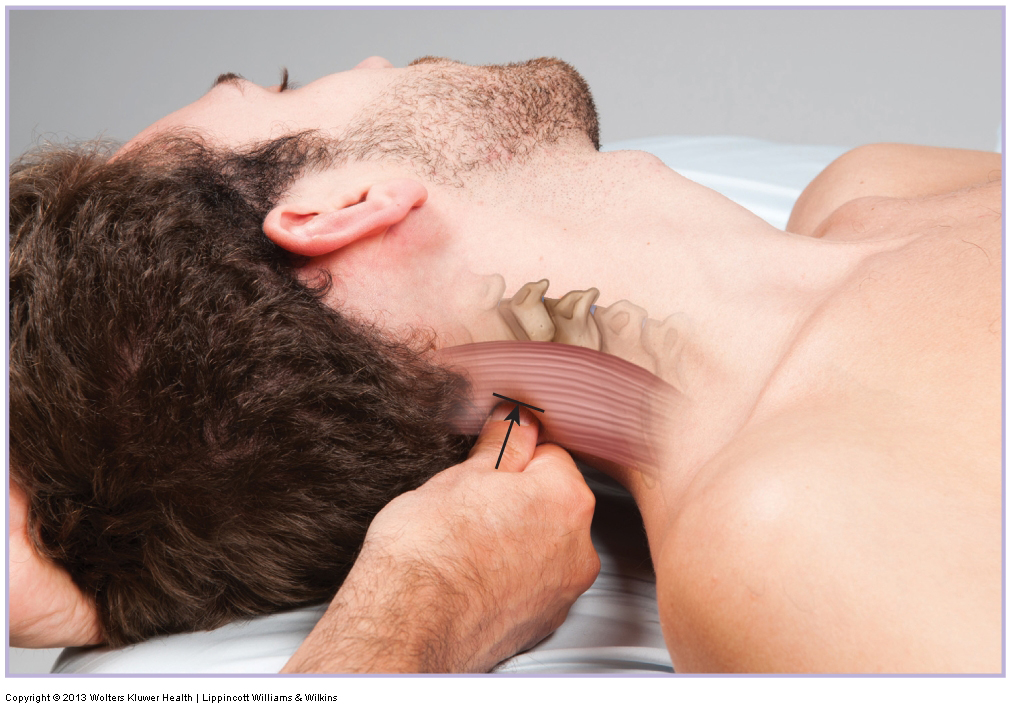Most therapists have been taught how to work a muscle when it is on stretch AND how to work it when it is slackened… But, when is it best to employ one method versus the other?
Of course the answer is resoundingly definitive: It depends!
Let’s look at an example. We want to massage the client’s upper right posterior neck because it is tight. Should we massage it with the tissue slackened by laterally flexing the client to the right (same) side? Or should we massage it with the tissue stretched by left laterally flexing the client’s neck to the opposite side?
The question is do we massage on stretch or do we massage on slack?
The answer… It depends upon what myofascia layer of tissue we are trying to treat.

Figure: Massage of the right upper cervical extensor musculature on slack (the client’s head/neck is being laterally flexed toward the side being worked. Permission Joseph E. Muscolino. Advanced Treatment Techniques for the Manual Therapist: Neck 2013.
If we want to massage the superficial upper trapezius, levator scapulae, splenius capitis (or perhaps even the semispinalis capitis), then massaging the area on stretch by left laterally flexing the client is perfectly fine because we are both massaging the musculature and stretching it at the same time. The addition of the stretching component may help to mechanically break stubborn actin-myosin cross-bridges that are stuck and need to be released in order to lessen the over contraction of the muscle. The stretching component may also help to loosen and break up fascial adhesions present in and around the muscle. So, massaging superficial muscles while on stretch can be a very good idea.
However, if our goal is to massage and treat the deeper layer of tissue, for example the semispinalis cervicis or one of the suboccipital muscles, then if we massage the area on stretch as just mentioned, the superficial myofascial tissues will become so taut from the stretch that it will be difficult or impossible for our pressure to penetrate through them into the deeper tissues, in this case to the semispinalis cervicis or suboccipital muscles. So, if our goal is to massage the deeper muscles, working the client on stretch is not helpful and is most likely counterproductive. Instead, to massage the deeper muscles, it is advisable to work the client with the region slackened.
Tip for Therapists:
Massage on stretch for superficial tissues.
Massage on slack for deeper tissues.
Tip for Teachers:
Do not just teach muscles in isolation, one at a time. Be sure to teach their relative locations to each other. You might also want to make mention of this idea of massage on stretch or massage on slack when teaching superficial and deeper muscles so that your students see another application and reason for learning all the muscles that are in your curriculum!


